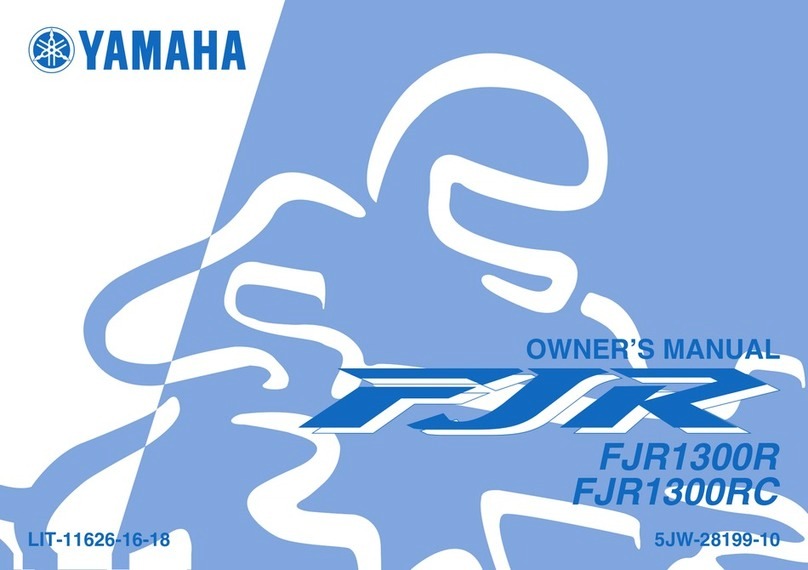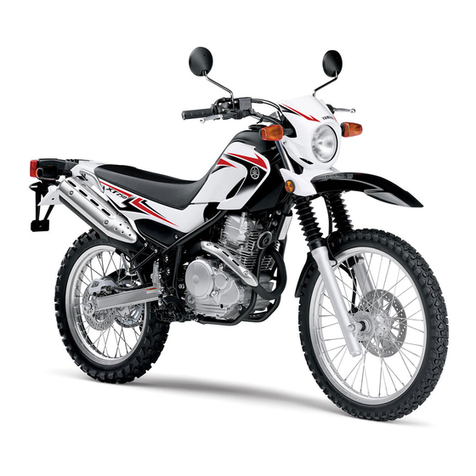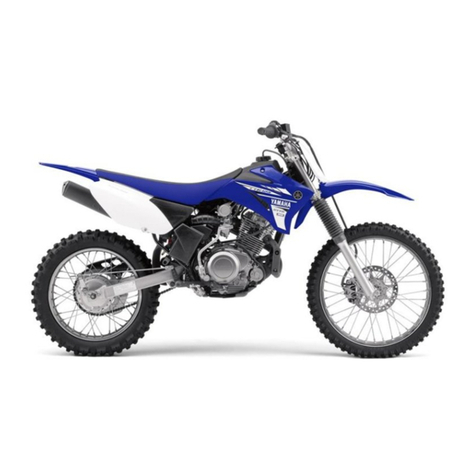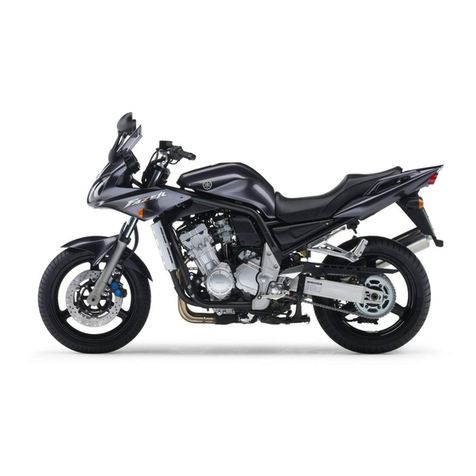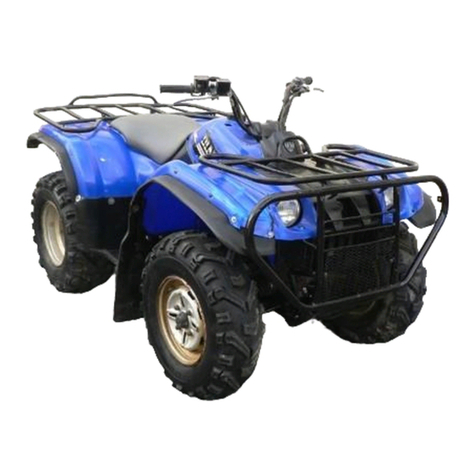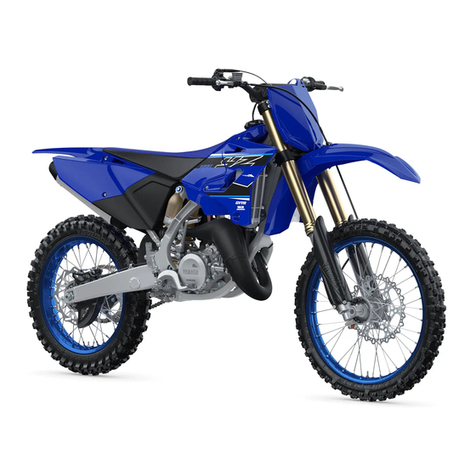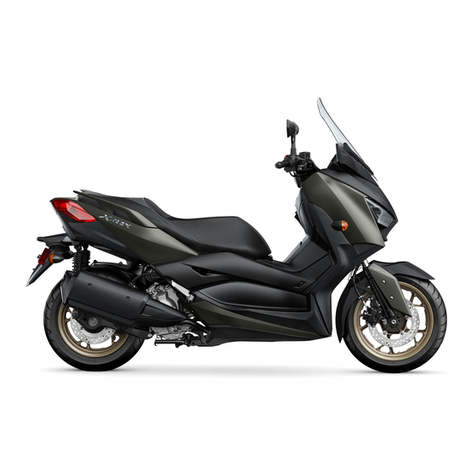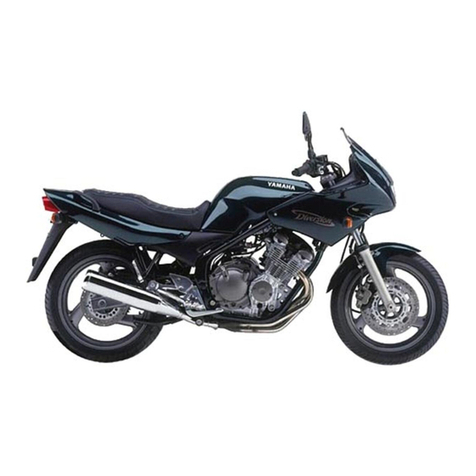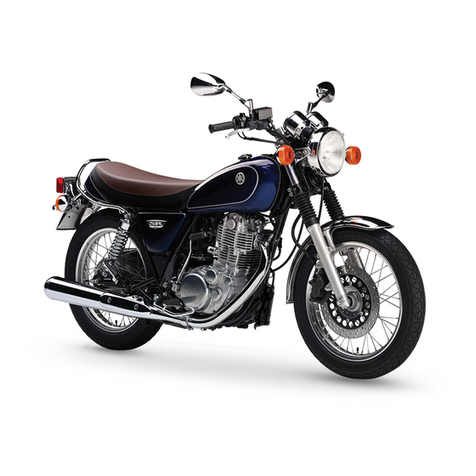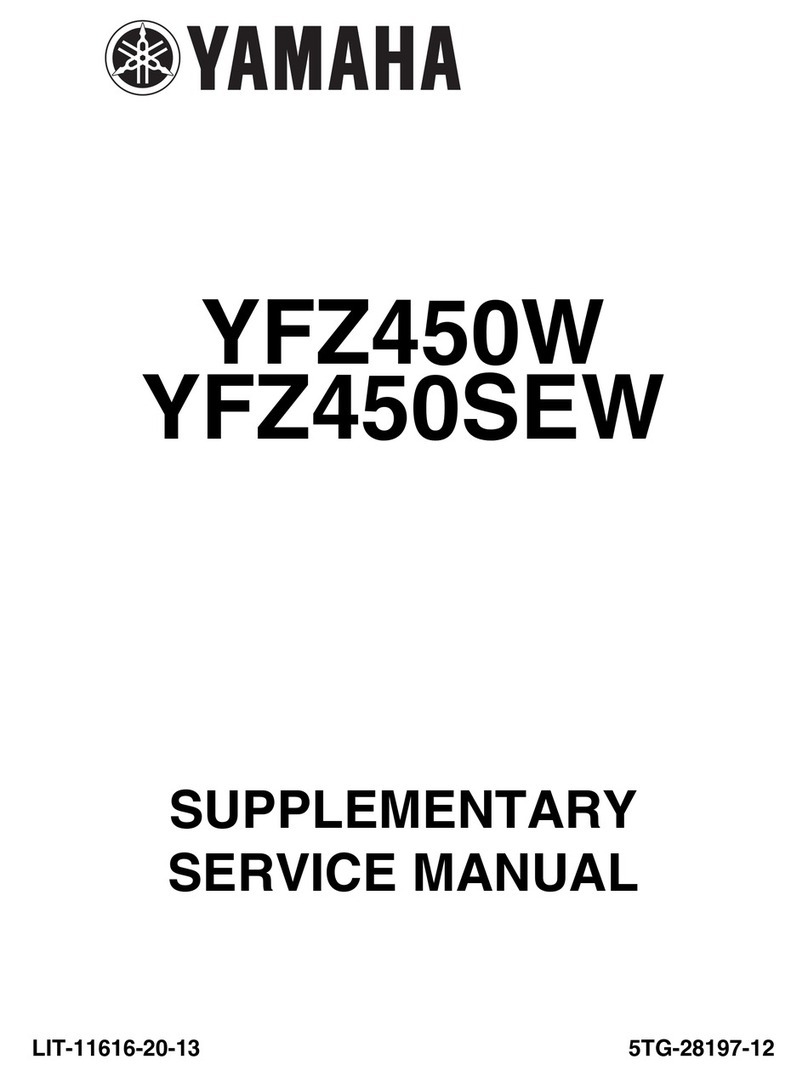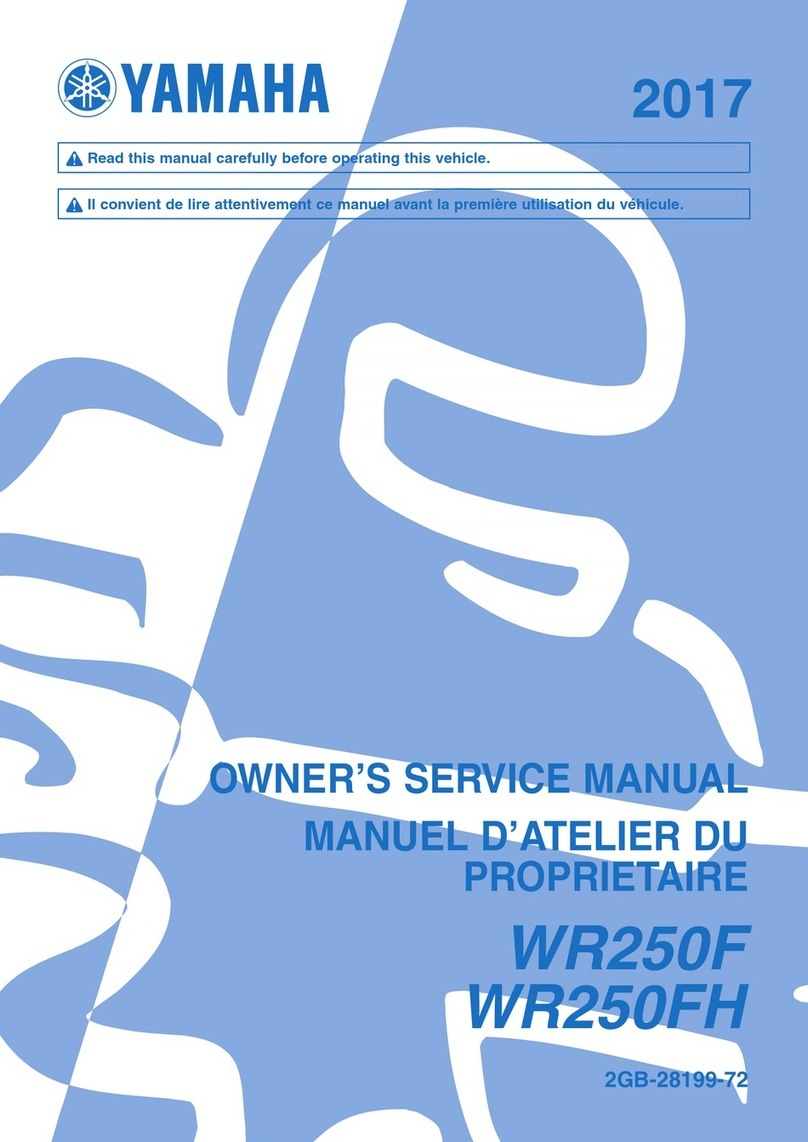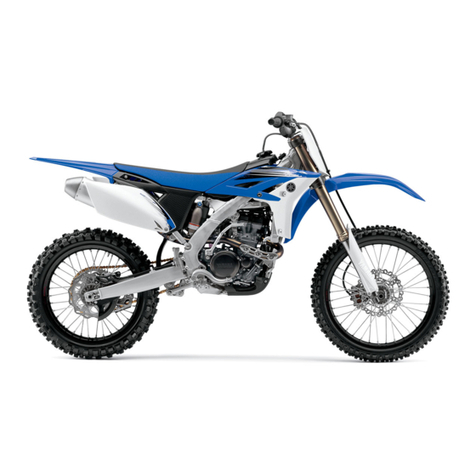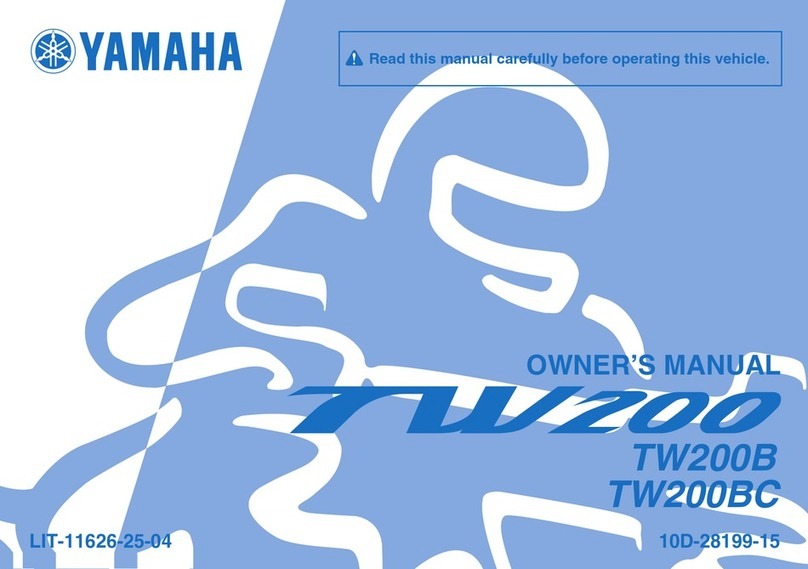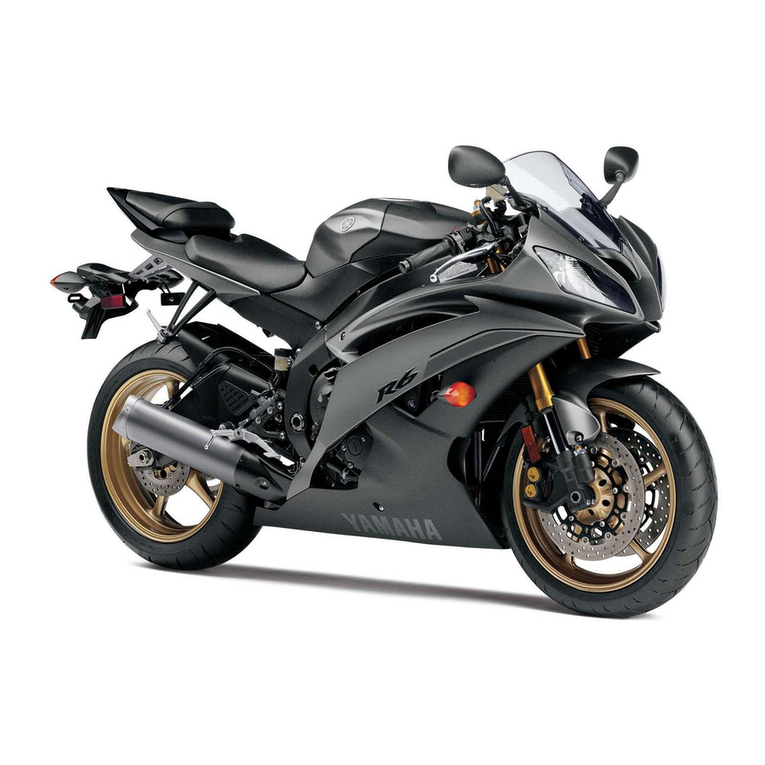
SAFETY INFORMATION
1-1
EAM20168
SAFETY INFORMATION
Be sure to read this manual carefully and com-
pletely in order to operate the machine safely
and correctly prior to riding the Yamaha ma-
chine, and take care to maintain it properly and
operate it safely.
EAM30401
FOR SAFETY, BE SURE TO OBEY THE
FOLLOWING:
Be a Responsible Owner
As the vehicle’s owner, you are responsible for
the safe and proper operation of your motorcy-
cle.
Motorcycles are single-track vehicles.
Their safe use and operation are dependent
upon the use of proper riding techniques as well
as the expertise of the operator. Every operator
should know the following requirements before
riding this motorcycle.
He or she should:
1. Obtain thorough instructions from a compe-
tent source on all aspects of motorcycle oper-
ation.
2. Observe the warnings and maintenance re-
quirements in this manual.
3. Obtain qualified training in safe and proper
riding techniques.
4. Obtain professional technical service as indi-
cated in this manual and/or when made nec-
essary by mechanical conditions.
5. Never operate a motorcycle without proper
training or instruction. Take a training course.
Beginners should receive training from a cer-
tified instructor. Contact an authorized motor-
cycle dealer to find out about the training
courses nearest you.
Safe Riding
Perform the pre-operation checks each time you
use the vehicle to make sure it is in safe operat-
ing condition. Failure to inspect or maintain the
vehicle properly increases the possibility of an
accident or equipment damage. Refer to “PRE-
OPERATION INSPECTION AND MAINTE-
NANCE” on page 3-4 for a list of pre-operation
checks.
1. This motorcycle is designed for off-road use
only, therefore, it is illegal to operate it on
public streets, roads, or highways, even a dirt
or gravel one. Off-road use on public lands
may be illegal. Please check local regulations
before riding.
2. This motorcycle is designed to carry the oper-
ator only. No passengers.
3. The failure of motorists to detect and recog-
nize motorcycles in traffic is the predominat-
ing cause of automobile/motorcycle
accidents. Many accidents have been
caused by an automobile driver who did not
see the motorcycle. Making yourself conspic-
uous appears to be very effective in reducing
the chance of this type of accident.
Therefore:
•Wear a brightly colored jacket.
•Use extra caution when you are approaching
and passing through intersections, since in-
tersections are the most likely places for mo-
torcycle accidents to occur.
•Ride where other motorists can see you.
Avoid riding in another motorist’s blind spot.
•Never maintain a motorcycle without proper
knowledge. Contact an authorized motorcy-
cle dealer to inform you on basic motorcycle
maintenance. Certain maintenance can only
be carried out by certified staff.
4. Many accidents involve inexperienced opera-
tors.
•Make sure that you are qualified and that you
only lend your motorcycle to other qualified
operators.
•Know your skills and limits. Staying within
your limits may help you to avoid an accident.
•We recommend that you practice riding your
motorcycle until you have become thoroughly
familiar with the motorcycle and all of its con-
trols.
5. Many accidents have been caused by error of
the motorcycle operator. A typical error made
by the operator is veering wide on a turn due
to excessive speed or under cornering (insuf-
ficient lean angle for the speed). Never travel
faster than warranted by conditions.
6. Ride cautiously in unfamiliar areas. You may
encounter hidden obstacles that could cause
an accident.
7. The posture of the operator is important for
proper control. The operator should keep
both hands on the handlebar and both feet on
the operator footrests during operation to
maintain control of the motorcycle.
8. Never ride under the influence of alcohol or
other drugs.
9. Be sure the transmission is in neutral before
starting the engine.
Protective Apparel
The majority of fatalities from motorcycle acci-



